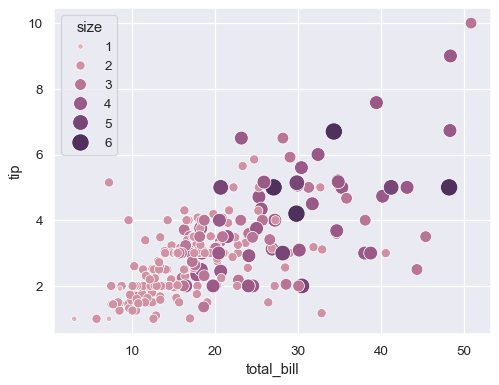


Specifically, we specified a sns.scatterplot as the type of plot we'd like, as well as the x and y variables we want to plot in these scatter plots. To this grid object, we map() our arguments. Finally, we've set the col_wrap argument to 5 so that the entire figure isn't too wide - it breaks on every 5 columns into a new row. We've also assigned the hue to depend on the region, so each region has a different color. By specifying the col argument as "Region", we've told Seaborn that we'd like to facet the data into regions and plot a scatter plot for each region in the dataset. Here, we've created a FacetGrid, passing our data ( df) to it. Here, we've supplied the df as the data argument, and provided the features we want to visualize as the x and y arguments. We don't need to fiddle with the Figure object, Axes instances or set anything up, although, we can if we want to. Seaborn makes it really easy to plot basic graphs like scatter plots. Sns.scatterplot(data = df, x = "Economy (GDP per Capita)", y = "Happiness Score") We'll plot the Happiness Score against the country's Economy (GDP per Capita): import matplotlib.pyplot as plt Now, with the dataset loaded, let's import PyPlot, which we'll use to show the graph, as well as Seaborn. We'll use the World Happiness dataset, and compare the Happiness Score against varying features to see what influences perceived happiness in the world: import pandas as pdĭf = pd.read_csv( 'worldHappiness2016.csv') We'll cover simple scatter plots, multiple scatter plots with FacetGrid as well as 3D scatter plots.
SEABORN SCATTER PLOT MARKER TYPE HOW TO
In this tutorial, we'll take a look at how to plot a scatter plot in Seaborn. It offers a simple, intuitive, yet highly customizable API for data visualization. share_kws dictionariesĪdditional keyword arguments to pass to plt.scatter andĭictionary of keyword arguments for FacetGrid.Seaborn is one of the most widely used data visualization libraries in Python, as an extension to Matplotlib. If a list, each marker in the list will be
SEABORN SCATTER PLOT MARKER TYPE CODE
markers matplotlib marker code or list of marker codes, optional aspect scalarĪspect ratio of each facet, so that aspect * height gives the width “Wrap” the column variable at this width, so that the column facets Shouldīe something that can be interpreted by color_palette(), or aĭictionary mapping hue levels to matplotlib colors. palette palette name, list, or dictĬolors to use for the different levels of the hue variable. Variables that define subsets of the data, which will be drawn on Input variables these should be column names in data. Tidy (“long-form”) dataframe where each column is a variable and each Want to use that class and regplot() directly. The parameters to this function span most of the options inįacetGrid, although there may be occasional cases where you will There are a number of mutually exclusive options for estimating the Your particular dataset and the goals of the visualization you are Rule is that it makes sense to use hue for the most importantĬomparison, followed by col and row. When thinking about how to assign variables to different facets, a general

Intended as a convenient interface to fit regression models across This function combines regplot() and FacetGrid. Plot data and regression model fits across a FacetGrid. lmplot ( data = None, *, x = None, y = None, hue = None, col = None, row = None, palette = None, col_wrap = None, height = 5, aspect = 1, markers = 'o', sharex = None, sharey = None, hue_order = None, col_order = None, row_order = None, legend = True, legend_out = None, x_estimator = None, x_bins = None, x_ci = 'ci', scatter = True, fit_reg = True, ci = 95, n_boot = 1000, units = None, seed = None, order = 1, logistic = False, lowess = False, robust = False, logx = False, x_partial = None, y_partial = None, truncate = True, x_jitter = None, y_jitter = None, scatter_kws = None, line_kws = None, facet_kws = None ) #


 0 kommentar(er)
0 kommentar(er)
